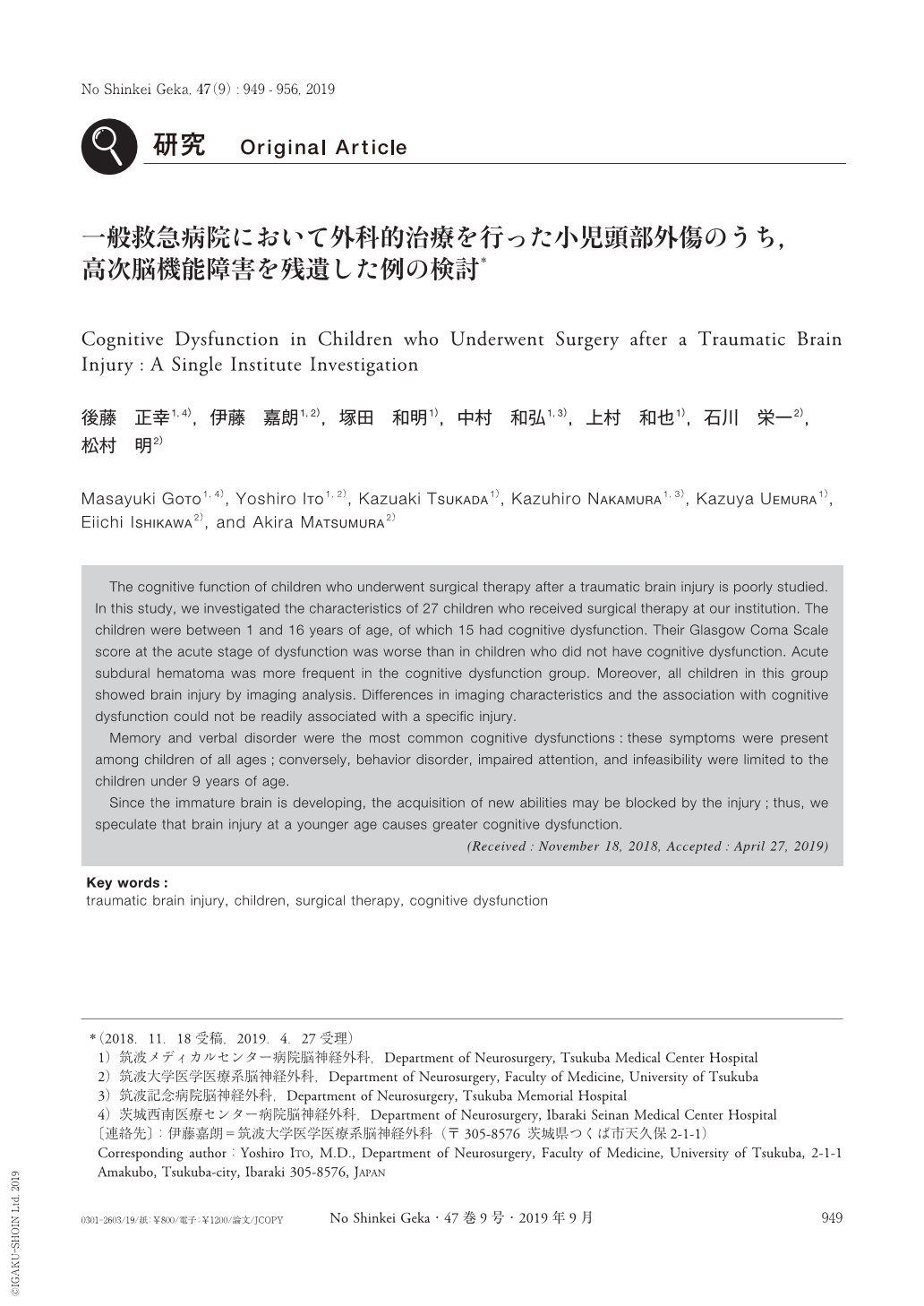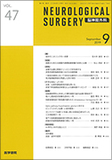Japanese
English
- 有料閲覧
- Abstract 文献概要
- 1ページ目 Look Inside
- 参考文献 Reference
Ⅰ.はじめに
小児の死亡原因の第1位は交通事故などの不慮の事故であり,頭部外傷が多く含まれている15).頭部外傷の急性期治療については多くの報告があり,急性期管理の進歩に伴って救命率も向上してきている20).しかしながら,救命し得たとしても,重症例では精神発達遅滞や高次脳機能障害(cognitive dysfunction:CD)を呈し,機能予後不良となることも多い3).これまで,小児頭部外傷におけるCDの実態は十分明らかになっていない.急性期診療に携わっている脳神経外科医にとっては,小児頭部外傷では救命目的で外科治療を行うが,救命し得た症例のCDについて認識しておくことは極めて重要である.
当院では小児重症頭部外傷で外科治療を行い,回復期リハビリテーション病院への転院を経て,自宅退院した後もリハビリテーションで定期的にフォローを行っている.本研究では,外科治療を要した小児重症頭部外傷におけるCDについて検討した.
The cognitive function of children who underwent surgical therapy after a traumatic brain injury is poorly studied. In this study, we investigated the characteristics of 27 children who received surgical therapy at our institution. The children were between 1 and 16 years of age, of which 15 had cognitive dysfunction. Their Glasgow Coma Scale score at the acute stage of dysfunction was worse than in children who did not have cognitive dysfunction. Acute subdural hematoma was more frequent in the cognitive dysfunction group. Moreover, all children in this group showed brain injury by imaging analysis. Differences in imaging characteristics and the association with cognitive dysfunction could not be readily associated with a specific injury.
Memory and verbal disorder were the most common cognitive dysfunctions:these symptoms were present among children of all ages;conversely, behavior disorder, impaired attention, and infeasibility were limited to the children under 9 years of age.
Since the immature brain is developing, the acquisition of new abilities may be blocked by the injury;thus, we speculate that brain injury at a younger age causes greater cognitive dysfunction.

Copyright © 2019, Igaku-Shoin Ltd. All rights reserved.


